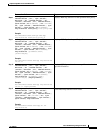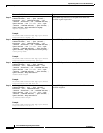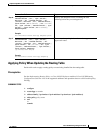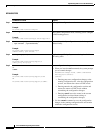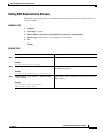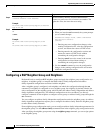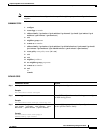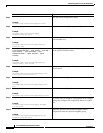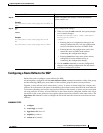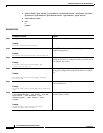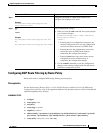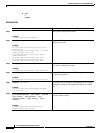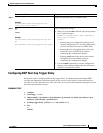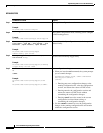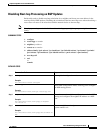
Implementing BGP on Cisco IOS XR Software
How to Implement BGP on Cisco IOS XR Software
RC-77
Cisco IOS XR Routing Configuration Guide
OL-14356-01
Configuring a Route Reflector for BGP
Perform this task to configure a route reflector for BGP.
All the neighbors configured with the route-reflector-client command are members of the client group,
and the remaining iBGP peers are members of the nonclient group for the local route reflector.
Together, a route reflector and its clients form a cluster. A cluster of clients usually has a single route
reflector. In such instances, the cluster is identified by the software as the router ID of the route reflector.
To increase redundancy and avoid a single point of failure in the network, a cluster can have more than
one route reflector. If it does, all route reflectors in the cluster must be configured with the same 4-byte
cluster ID so that a route reflector can recognize updates from route reflectors in the same cluster. The
bgp cluster-id command is used to configure the cluster ID when the cluster has more than one route
reflector.
SUMMARY STEPS
1. configure
2. router bgp as-number
3. bgp cluster-id cluster-id
4. neighbor ip-address
5. remote-as as-number
Step 13
remote-as as-number
Example:
RP/0/RP0/CPU0:router(config-bgp-nbr)# remote-as
2002
Creates a neighbor and assigns a remote autonomous
system number to it.
Step 14
end
or
commit
Example:
RP/0/RP0/CPU0:router(config-bgp-nbr)# end
or
RP/0/RP0/CPU0:router(config-bgp-nbr)# commit
Saves configuration changes.
• When you issue the end command, the system prompts
you to commit changes:
Uncommitted changes found, commit them before
exiting(yes/no/cancel)?
[cancel]:
–
Entering yes saves configuration changes to the
running configuration file, exits the configuration
session, and returns the router to EXEC mode.
–
Entering no exits the configuration session and
returns the router to EXEC mode without
committing the configuration changes.
–
Entering cancel leaves the router in the current
configuration session without exiting or
committing the configuration changes.
• Use the commit command to save the configuration
changes to the running configuration file and remain
within the configuration session.
Command or Action Purpose



